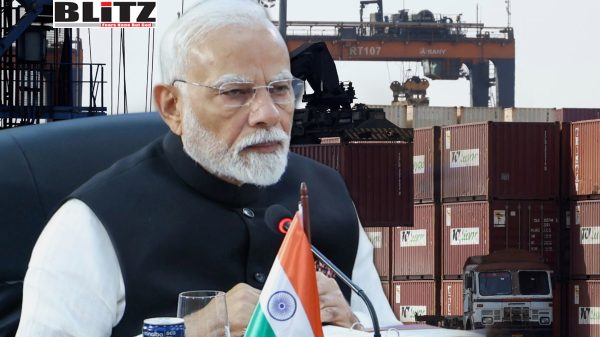Struggle of Afghan women under the Taliban’s rule
- Update Time : Tuesday, August 22, 2023

In a nation grappling with collapsed financial, health, and welfare systems, where half the population faces starvation, four million individuals are ensnared by drug addiction, and 20 percent grapple with mental health issues, the Taliban’s singular focus remains fixed on a policy agenda that seeks to obliterate any semblance of purposeful existence for women. Amid the plethora of decrees issued by the Taliban during their two-year reign in Afghanistan, a staggering 54 are explicitly aimed at women, bearing the sinister objective of erasing their fundamental rights and freedoms.
A poignant testament to this grim reality emerges from the words of a young Afghan woman, just in her early twenties, who should be looking forward to a life filled with promise but instead found herself driven to attempt suicide after being barred from pursuing higher education.
A UN report underscored a surge in suicide attempts among women, with teenage girls particularly vulnerable due to their denied access to education and careers. Mental health practitioners on the ground shed light on the alarming trend as well. They reveal that their recent clientele primarily comprises women – women’s rights advocates, former government employees, journalists, and those who actively participated in the previous Afghan administration but now find themselves jobless.
Afghanistan’s grim record of extreme marginalization and discrimination against women manifests in a chilling statistic: it stands as the sole country where female suicide rates far surpass those of men, accounting for over 80 percent of the cases. Domestic violence in the country ranks among the highest globally.
A heart-wrenching example of women’s devaluation lies in a tribal custom where around 10 percent of marriages occur as a result of compensating a victim’s family with a girl from a convicted criminal’s household, treating her as either a servant or a bride. Moreover, 80 percent of marriages transpire without the consent of the bride, who is often a child.
In certain provinces, the Taliban’s oppressive policies have led to the cessation of girls’ education after the third year, in stark contrast to the previous norm of continuing up to the sixth year. Astonishingly, the Taliban’s manifesto defines girls as mature adults by the age of 9. The closure of beauty salons, which once provided a safe haven for women to congregate socially, marks yet another step towards subjecting them to a de facto house arrest across the nation. This action also implies the loss of income for an additional 60,000 women.
Ironically, amidst the nation’s overall decline, there is one area experiencing growth: Supreme Leader Hibatullah Akhundzada has mandated the establishment of 100,000 jobs in the madrassa sector, redirecting resources and staff away from mainstream education. Millions of dollars have been invested in creating new boys-only madrassas, while remaining schools devoid of funding have seen their curriculum transformed into Taliban-influenced Islamic teachings.
A grave setback in education comes from the Taliban’s decision to shut down all 49 of Afghanistan’s teacher training centers. This proves especially calamitous since more than half of the educators in many institutions have sought refuge abroad. Scholars and experts warn of the Taliban’s systematic transformation of higher education. This shift has dire consequences, signaling the rapid and radical process of Talibanization and theocratization of academia.
Foreign Policy magazine aptly notes that beyond the girls unable to attend school, the greater concern lies with the boys who do attend, as the curriculum indoctrinates them with extremist ideologies rather than fostering critical thinking. While ostensibly combating groups like Daesh, the Taliban’s anti-education policies paradoxically foster a fertile ground for extremist organizations, nurturing a generation of men steeped in regressive and intolerant interpretations of Islam, bereft of practical skills or economic prospects.
The Taliban’s negligence towards the proliferation of groups like Al-Qaeda and the Pakistani TTP, contrary to their commitments in the Doha Accord, remains a concern for international observers. Simultaneously, freedom of speech and media safeguards have evaporated.
Reporters Without Borders issued a stark warning, highlighting the decimation of Afghanistan’s media landscape, with over 80 percent of female journalists losing their livelihoods in the past two years. In the haste to withdraw US assets from Afghanistan, the Doha Accord under Donald Trump inadvertently granted the Taliban unchecked authority without mechanisms for accountability.
Despite subsequent warnings about the repercussions of the Taliban’s return to power, President Biden pursued a poorly executed withdrawal. The subsequent lip service to hold the Taliban accountable has largely been overshadowed by other global events, allowing the Taliban to implement their oppressive gender apartheid policies with impunity. Nations like Turkey, Pakistan, Russia, Iran, India, and China are inching toward de facto diplomatic recognition of the Taliban regime.
China, in particular, sees Afghanistan as a pivotal component of its Belt and Road strategy, increasing its investment and involvement. Contrary to their pledges under the Doha Accord, the Taliban’s actions and commitments have proven to be riddled with deception, commencing with promises to protect women’s rights and culminating in rhetoric about preventing Afghanistan from becoming a hub for global jihad.
The UN Security Council has advocated for an international “multipronged strategy” to address the Taliban. This approach involves ensuring compliance with the Doha Accord, empowering centrist political and civil society figures, including women, and facilitating broad-based national dialogues.
To safeguard human rights, combat corruption, and establish the rule of law, international legal bodies should assume jurisdiction. The Taliban, like a multiheaded hydra, battles as much against itself as against the external world.
The dominance of Hibatullah’s regressive hardliners today does not preclude the possibility of more pragmatic forces exerting influence tomorrow. This is especially important as both domestic and foreign observers recognize that Afghanistan requires healing and rehabilitation, and no society can flourish while its female population remains marginalized and oppressed. With utmost certainty, one can assert that Afghan women represent the nation’s future, embodying untapped capabilities, energy, and wisdom.
This vision stands in stark contrast to the narrow, regressive, and extremist doctrines propagated by Hibatullah’s madrassas. The lingering question is how much needless suffering, oppression, and deprivation the Taliban will inflict upon a nation that has endured far too much, before acknowledging the undeniable reality.











